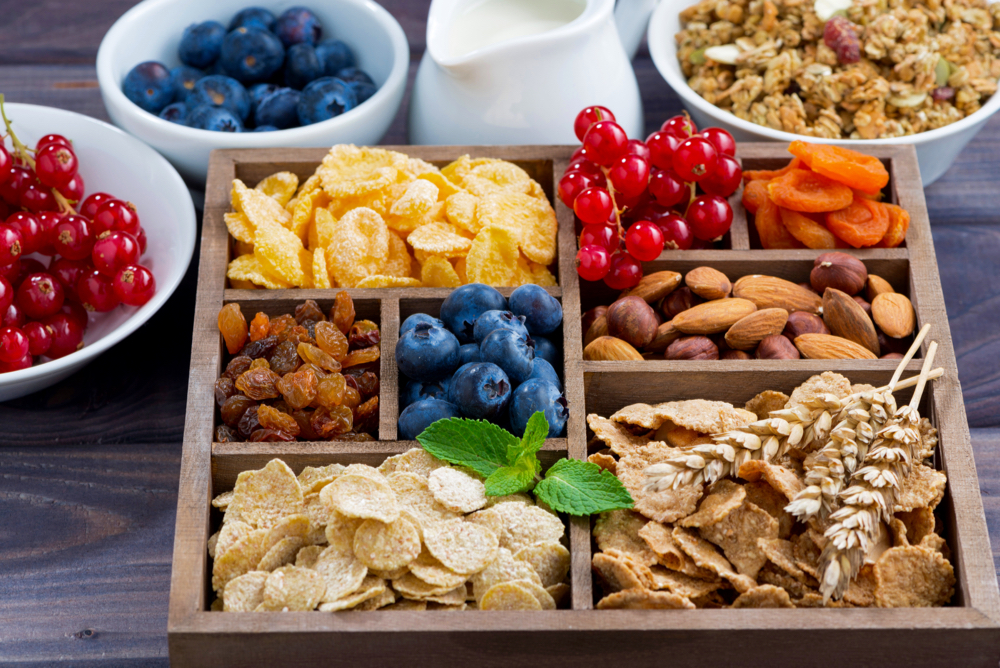We’re living longer, and we are also learning how to live those extra years better. If we want them to be good years, it makes sense to pay attention to what we’re eating as we age.

“Diet is a major determinant of health,” says Dr. Alison Duncan, a professor in human health and nutritional sciences at the University of Guelph. “Maintaining a healthy diet can help older adults have more energy, sleep better and feel better, and also help reduce risk of disease.”
In fact, adds Duncan, “A healthy diet is particularly important for older adults. They may be eating less food so nutrient density becomes important, making the most of the nutrition in what you eat.”
There are other factors at play too. “Older adults may be at risk for malnutrition because the process of aging itself can alter nutrient metabolism including absorption and bioavailability, essentially making nutrition less efficient,” explains Duncan.
Read Also

Employment Agreements Can Help Protect Your Farm
Entering into employment agreements with each of your farm employees should be at the top of every farm’s “to do” list, but caution must be exercised.
Oral health, cognitive decline, social isolation and/or drug-nutrient interactions are other factors that can affect nutritional intake or utilization as we age. While not all of these factors apply to everyone, Duncan emphasizes that “everyone benefits from eating a nutrient-dense diet.”
Country Guide caught up with Duncan recently for a Q & A session. (The interview has been edited for length.)
CG: What age are we talking about when we say “older adults?”
Duncan: The United Nations defines older adults as anyone older than 60 years of age.
CG: I hear a lot about functional foods. What is meant by this term?
Duncan: Functional foods are foods that have some kind of bioactive component that has been shown to reduce the risk of chronic disease. In this way, the food is thought to contribute to health beyond the basic nutrition that it has. This bioactive component can be naturally occurring in the food (such as anthocyanins in blueberries) or it could be added to the food during production (such as omega-3 fatty acids in eggs).
CG: What are the top foods to eat or avoid for maintaining brain and heart health?
Duncan: There have been many aspects of food and nutrition that have been studied for their role in the health of the brain and heart. The best overall dietary strategy to optimize health is one that is based on moderation and variety. This approach ensures that you are exposed to many nutrients.
There have been many dietary components that have been studied in relation to brain health. The omega-3 fatty acids, DHA and EPA that can be found in fish are some of the common ones. There have also been many dietary components that have been studied in relation to heart health. A very common one is soluble fibre, such as that found in oats, which makes oatmeal a great way to start the day.
CG: We hear a lot about increasing the amount of beans in our diets these days. Why is that?
Duncan: Beans are a nutrient-dense food. They are high in dietary fibre, protein, vitamins and minerals, and they have a low glycemic index. Beans can also help reduce your risk of heart disease, diabetes and some cancers.
Beans are also extremely versatile: they come in many different varieties and are affordable, and there are endless ways to eat and enjoy them.
CG: Should white flour be avoided? If so, why?
Duncan: White flour can be part of a healthy diet that is based on moderation and variety. White flour can be used in baking nutritious foods at home and can be a part of a healthy diet. For example, you could make a banana bread or zucchini bread using white and whole wheat flours. In Canada, it is mandatory that white flour have added thiamin, riboflavin, niacin, folic acid and iron and it is optional for it to have added vitamin B6, pantothenic acid, magnesium and calcium.
CG: Are there superfoods for older adults? If so, what are the top five and why?
Duncan: The term superfood is really a buzzword. You could really just think of superfoods as foods that are packed with nutrients. If I had to think of such a list, my reasoning for that list would be that the foods are nutrient-dense and versatile or easy to eat either on their own or to include in meals and snacks.
There are so many foods that fit these criteria, I just cannot rank them. However, some examples, in no particular order, since they are all amazing, include beans, lentils, eggs, berries, salmon, any fruit or vegetable, lean meats, milk, nuts and seeds.
A healthy recipe source
The University of Guelph department of human health and nutritional sciences has collaborated with Agri-food for Healthy Aging, part of the Schlegel-UW Research Institute for Aging (RIA) to develop the Recipe Resource for Healthy Aging.
The researchers partnered with grower groups and got permission to either use or adapt their recipes to be suitable for older adults. They also engaged with older adults to find out what types of recipes they would find most useful. Besides recipes, the resource contains cooking tips, nutrition and healthy aging notes, plus testimonials from older adults.
This recipe for blueberry muffins is reprinted with permission from the Recipe Resource for Healthy Aging at the-ria.ca/resources/recipe-resource-for-healthy-aging/
They are bursting with flavour and have become a staple at my house.
Low-fat, High-fibre Blueberry Muffins
Number of servings: 12 muffins
Ingredients
- Quick rolled oats 1 cup (250 mL)
- Buttermilk* 1 cup (250 mL)
- Eggs 2
- Unsalted butter, melted ¼ cup (60 mL)
- Light brown sugar, packed 2/3 cup (150 mL)
- All-purpose flour ½ cup (125 mL) & 1 tbsp (15 mL)
- Spelt or whole-wheat flour ½ cup (125 mL)
- Baking powder 1 tsp (5 mL)
- Baking soda ½ tsp (2.5 mL)
- Salt ½ tsp (2.5 mL)
- Nutmeg, ground ¼ tsp (1.25 mL)
- Cinnamon, ground ¼ tsp (1.25 mL)
- Blueberries, fresh or frozen 1½ cups (350 mL)
Directions
1. Preheat oven to 400°F. Lightly grease a 12-cup muffin pan or line with muffin cups.
2. In a bowl, stir together oats and buttermilk; let stand for 5 minutes. Stir in eggs and butter.
3. In a separate bowl, combine brown sugar, ½ cup all-purpose flour, spelt flour, baking powder, baking soda, salt, nutmeg and cinnamon. In another bowl, gently toss blueberries with 1 tbsp all-purpose flour.
4. Make a well in the middle of the flour mixture; gently stir in oat mixture. Do not over-mix. Gently fold in blueberries. Spoon mixture evenly into prepared pan.
5. Bake in centre of preheated oven until firm to the touch, 15 to 20 minutes.
Nutrition per serving: Calories 170 | Protein 4 g | Fat 5 g | Carbohydrates 29 g | Fibre 2g | Sodium 210 mg
Recipe notes: Oats contain soluble fibre which helps to lower cholesterol levels. High cholesterol is a risk factor for heart disease.
Blueberries freeze well, so consider buying extra when in season (July-September). Freeze first on a baking sheet, then seal them in a plastic bag for future use.
*In place of buttermilk, you can use one cup of “soured milk” made by pouring one tablespoon of vinegar into a measuring cup and filling to the one cup mark with fresh milk. Let sit for five minutes before using.
Resources
Healthy Eating Info for Seniors
- Health Canada has a website for Canada’s Food Guide that provides a lot of guidance and tips and you can even sign up to get the latest updates on healthy eating delivered directly to your email inbox.
- Unlock Food from Dietitians of Canada provides lots of great information about food, nutrition and health.
















